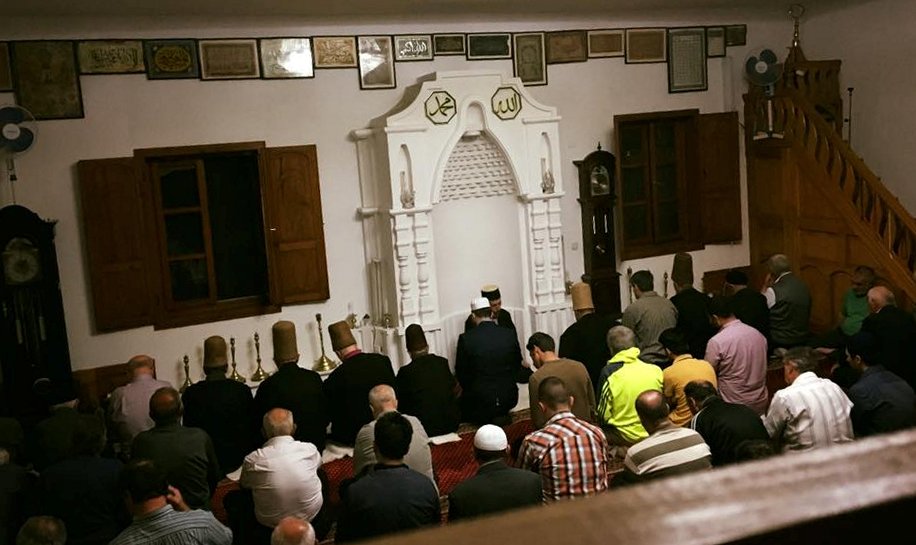THE INDIAN-TURKISH CONNECTIONS IN THE FIELD OF SUFISM – Anna SUVOROVA
III. ULUSLARARASI MEVLÂNA KONGRESİ
THE INDIAN-TURKISH CONNECTIONS IN THE FIELD OF SUFISM
Prof.Dr. Anna SUVOROVA*
Most Western researchers of tasawwuf consider Mevlewiyya order to be localized, its influence being restricted to Asia Minor and the Ottoman European provinces; such tekke as were founded elsewhere, as in Damascus, Jerusalem, and Cairo, being chiefly for Turk.
But the thorough study of the early South Asian Sufism, which is the area of my professional expertise, show the direct and indirect influence of Mevlana Rumi and his tariqa on the main mystic orders of India.
First and foremost it concerns Mevlana’s authority itself and his magnum opus –Mathnawi-i ma’nawi. The most prominent Sufi authors of India, following Jami, called Mathncnvi ‘the Qur’an in Persian’ (hast Qur’an dor zaban-i Pahlavf). To take omen from Mathnawi or from the Diwan of Hafiz was common practice in India. The most spiritual mathnawis in India were written after Rumi’s pattern, like Baba Da’ud Khaki’s (d.1586) Wird al-muridin or Risalo by the great Sindhi mystic Shah ‘Abdul Latif Bhitai( 1689-1752).
The role of a wandering dervish Shamsaddin Tabrizi in Mevlana’s life and poetry is widely known. Rumi’s obsession with Shams gave Mevlana’s life a new dimension that turned him from a sober mystic into an ecstatic whose visions he transmuted into inspired Persian poetry. Fifteen months’ muraqaba, or spiritual communion, with Shams made Mevlana’s other murids jealous and they had plotted against the dervish. To Mevlana’s dismay he disappeared as mysteriously as he had appeared. In fact, he had been murdered by the murids.
To this popular story the South Asian Sufis have added the amendment of their own. In Pakistani city of Multan the tomb of Shams Tabrizi, or Pir Shams, became the place of popular pilgrimage and veneration. Here Shams Tabrizi is a typical example of duplication of different Muslim saints. Buried in Multan, Pir Shams was most probably an Isma’ili missionary, who seems to have been to India in the mid-14th century. He came from Badakhshan to Kashmir, then to Multan. The Isma’ilis in the remote Hunza valley may belong to those whom he converted. But the popular tradition of Punjab blended his name with the name of famous Shamsuddin Muhammad Tabrizi, friend and nurshid of Jalaluddin Rumi. This wandering mystic, whose name Rumi used in his “Diwan-i Shams Tabriz was killed around 1247 and presumably buried in Konya. But the Indian tradition affirms that he managed to save himself from the hands of the assassins and flee to India.
Pir Shams of Multan is widely mentioned in Sindhi and Siraiki folk songs as the ‘martyr of love’. Followers of Pir Shams, the Shamsi, are still found in the area from Multan to Dera Ghazi Khan in the West, Bahawalpur in the South East, and although the Shamsi, like many Isma’ili groups, have maintained a number of Hindu customs, they belong to the fold of the Agha Khan.
The ‘urs of Pir Shams of Multan is closely connected with etiological legends of Punjab. Thus, for example, springtime in Multan is notorious for its exceptionally oppressive heat, which is also reflected in the Persian saying:
Char chiz ast tohfa-i Multan
Gard-o garmd, gadd-o goristan.
Four things are gift of Multan:
Heat, dust, beggars and graveyards.
The origin of this heat is explained by the curse of saint Shams Tabrizi, who passed away in this town approximately in the year 1276. Hagiographic tradition says that a compassionate butcher had given for subsistence a piece of mutton to the wandering saint. However none of the inhabitants of Multan was willing to help the saint and roast the meat on his hearth; blacksmiths, in whose smithies fire never stop burning, proved to be particularly callous. Breaking down from hunger, Shams Tabrizi fell in wayside dust, and Allah, taking pity on him, made the sun descend from the heavens so low, that terribly intense heat roasted the meat. And this miracle is repeated every spring for the edification of the inhabitants of Multan. During the rurs of the saint they cook and give out to beggars pieces of fried mutton, do honor to butchers and cast stones at blacksmiths in the streets.
Of course Shams Tabrizi is not the unique example of duplication of this sort. Generally speaking in the world of South Asian saints there is a great number of doubles: a saint whose tomb is venerated at one place, might actually have been buried at quite another place. From this point of view many sacred tombs happen to be cenotaphs. Veneration of Bayazid Bistami’s grave in Chittagong (Bangladesh) is to a still greater degree at variance with historical facts: this famous Persian mystic never went to East Bengal, and what is more he never left his native place Bistam in Iran, where he was also laid to eternal rest. There is a tomb in Qalat (Baluchistan), ascribed to Shaikh ‘Abdul Qadir Jilani, although Baluchis, like other Muslims of the world, know quite well that the “great intercessor”, eponym of the Qadiriyya order, is buried in Baghdad.
No doubt, the veneration of Shams Tabrizi in Multan manifested only vague and indirect impact of the Mevlewis on India, like any legend. But there are enough of more direct and documented facts of this influence. Thus, the famous wandering mystic Bu “Ali Qalandar of Panipat (d.1323) visited Konya and probably met Sultan Weled having depicted this visit in his maktubat. From Bu ‘All’s mystical mathnawis it is clear that he was well acquainted with Rumi’s Mathnawi sometime making exact quotes from it. Thus following Rumi, Bu ‘Ali Qalandar classifies the ascetic as one who seeks mercy (rahmd) while the lover seeks pain (zahmd).
With Mevlewis was closely connected Shah Khizr Rumi, with whom, as a matter of fact, begins the story of Qalandariyya fraternity in South Asia. A native of Anato-liya, Shah Khizr Rumi according to the Indian Sufi hagiography was sent to India by Mevlana himself. On arriving in Delhi during the reign of Sultan Iltutmish (1210-1236), Khizr Rumi was initiated into the Chishtiyya order. In that way we find Khizr Rumi at the source of the new derivative fraternity of Qalandariyya-Chishtiyya, which was especially popular in Jaunpur, Muslim Bengal and other eastern regions of present Uttar Pradesh.
Another famous saint, Jalaluddin Makhdum-i jahaniyan nicknamed Jahangasht for his constant wanderings (d. 1365) supposedly visited Konya during the lifetime of Jalaladdin ‘Arif (d. 1320), the successor of Sultan Weled. Formally Jahangasht belonged to Suhrawadiyya, but under his Turkish experience he had changed the structure and practice of his brotherhood. Although the system of akhi in its Turkish form does not have analogues in Indian medieval society, it is obvious that Jahangasht, famous for his puritanism and religious militancy, made use of it as a model for Jalaliyya order founded by him. Jahangasht called his disciples akhi and borrowed his ideal of spiritual brotherhood from the Anatolian craft-guilds and the akhi and futwwa organizations in Khurasan and Transoxania.
Mevlana’s poetical legacy became extremely popular in Muslim Bengal where the syncretism of Islam with Hindu Tantra was quite strong. Shaikh Faizullah (end of the 15th century) wrote that in the temples ‘the holy Brahman recites the Mathnawi of Rumi after the Muslim fashion’. In the delightful verse of the Bengali mystical poets -Bauls many ideas and tmages are found which sound as though they were taken from Rumi’s poetry, thus the emphasis on the ‘man of the heart’, the supreme beloved who rests in man’s heart, an the feeling of a real love relation between the human ‘ashiq and the transcendental Ma ‘shuq.
Rumi’s poetry itself sometimes could perform miracles (karamat) as it happened to the Mughal Emperor Aurangzeb in the later 17th century. Aurangzeb Alamgir, the most strict and sober of the Indian rulers, dislikedexaggerated mystical claims and the ecstatic attitude of the representatives of wahdat al-wujud as well as popular saint worship and devotional audition (sama’), but he was fond of Islamic scholars and moderate Sufism. Only once he was moved to tears when Rumi’s Mathnawi was recited before him in Burhanpur – the case his historians narrated in Fatawa-yi ‘alamgiri.
In the 19th century Mathnawi became the subject of scholarly or semi-scholarly commentaries in India. Among those who contributed to this field was Shibli Nu’mani (1857-1914), the founder of historiography in Urdu. He selected Rumi as topic for one of his studies and tried to show that Rumi’s famous verse:
I died as mineral and I became a plant, I died as plant and rose to animal state, should be understood as an expression of evolutionist ideas in the Darwinist sense, not as pointing to metempsychosis of similar ideas.
Of course the relations between the Indian and Turkish Sufis were much multidimensional and broader and need a detailed special research. The purpose of the present paper was to show briefly some aspects of the presumable impact of Mevlewiyya order on famous Indian Sufi saints.
* Rusya Bilimler Akademisi Şarkiyat Enstitüsü Öğretim Üyesi









